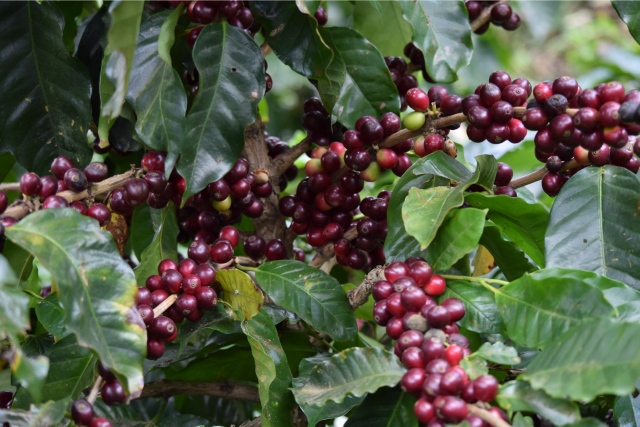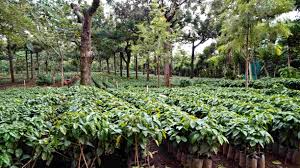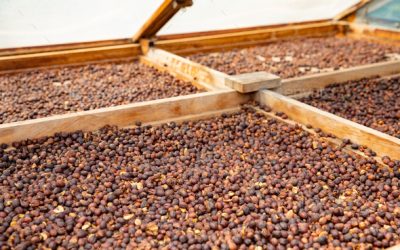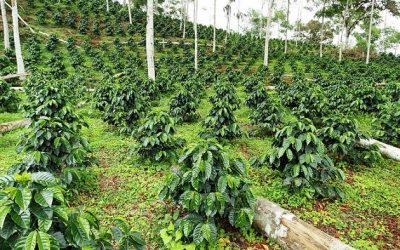More about Grafting coffee plants

Why do some producers graft coffee trees? The process can be tricky and usually costs more than planting standard plants.
But there can be advantages to growing grafted coffee, such as pest-resistance. Let’s learn a little more about what grafting is and the advantages and disadvantages of grafting coffee trees.
Grafting is the joining together of two plants, which is done for a number of reasons.
Coffee plants grafting is used to “take the best attributes of two coffee cultivars and combine them to get all the benefits of both in a single plant.”
To do this, a producer takes the rootstock of one tree and the scion of another and attaches them.
The rootstock is the lower part of a plant, made up of the roots and some stem. It provides anchorage and support to the upper parts of the plant.
The scion is the main component of the plant shoot when the plant is fully developed. It usually consists of the primary stem and branches. The scion determines the characteristics of the plant.
Grafting usually pairs pest and drought resistant rootstock with the flavorful and productive top or scion. Typically, Arabica is used for the scion since it has a more mellow flavor and good acidity, and Liberica has been the favored rootstock for its vigorous growth and resistance, although other cultivars have also been used.
Grafting can give you the edge you need for production and help prevent crop loss or plant death. In farming, you need every advantage you can get to stay in business, let alone stay competitive.
Advantages of growing grafted coffee plants.
The main goal of grafting coffee plants is to create a crop with the best attributes of two plants in one. For example, a grafted plant might offer the flavorful cherries and good yield of one variety, as well as the disease resistance of a second. Grafting can also provides anchorage and support to fragile or damaged trees.
For coffee specifically, farmers are mostly looking for the vigorous growth rate of the roots. The roots of the Liberica cultivar grow much faster than the Arabica cultivar. They can outgrow the damaging effects of a nematode that lives in the soil. The nematode eats the roots of the trees and Liberica grows so fast that the trees are not affected by the damage. So, grafting can reduce the risk of losing a coffee harvest to pests, and the need for pesticides.
Grafting is used mainly to propagate and allow the growth of varieties of commercial value in conditions that are unfavorable.
In short, grafting allows producers with less-than-ideal conditions to grow varieties that would otherwise be poorly suited to their farm.
Downsides to grafting coffee plants.
The main downside of grafting is that it takes more time and labor than planting conventional coffee trees, as well as greater investment at the start. This means that not all farmers have the resources to use grafted plants.
Grafting is not an easy process to master and can be slow. It is very detail oriented. You will not be 100% successful even if you are an expert. You have to prepare at least 20% more plants than you need and many farmers will plant upwards of 40 to 50% more just to be safe.
It also requires two plants for each single grafted coffee tree that you need. If a farmer needs 1,000 trees, they would typically plant around 3,000 seeds. Some seeds will not even germinate. Some plants will be weak or have defects and they will have to be discarded. The plants that make it to grafting will not all survive the process.
But in the long term, grafting can be cost effective for producers. Even though there is an initial cost to get grafted trees, the overall cost impact is quickly canceled out by increased production and resistance to environmental factors like drought or heat stress and soil-borne pests.


